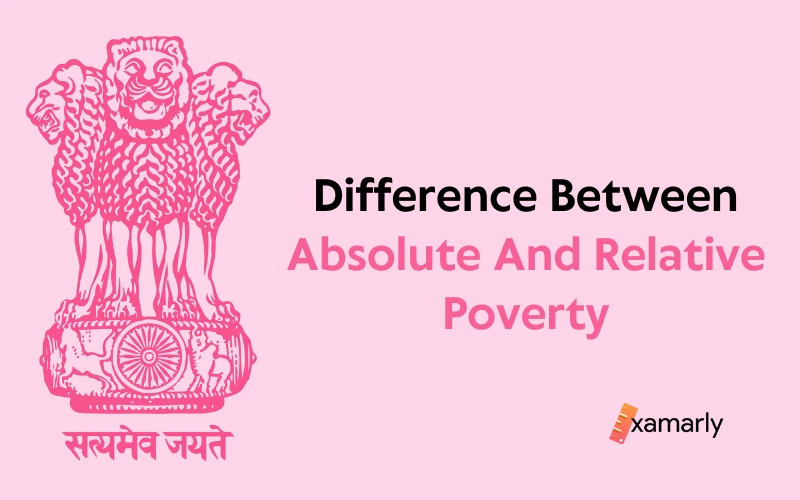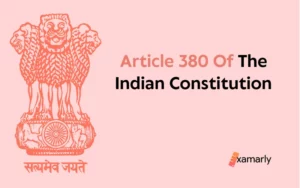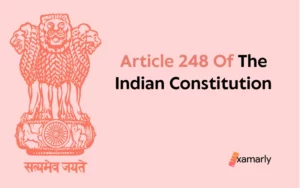An Overview
Poverty is a complex issue that affects people of all ages, races, and backgrounds. It can lead to poor health, lack of education, and limited opportunities for economic mobility. Understanding the different types of poverty and how they are measured is crucial in designing effective poverty reduction policies.
In this blog, we will delve into the concept of the difference between absolute and relative poverty. These are the two common measures of poverty. We will also explore the concept of poverty in detail and attempt to analyse the cycle of poverty and its various measures. By understanding the key differences between these two measures, that is, absolute poverty and relative poverty, we can gain a deeper understanding of the scope and severity of poverty, and take steps to address it effectively.
The Concept Of Poverty
Poverty is a condition in which individuals or households lack the resources and means to meet their basic needs for survival. These needs can include food, shelter, clothing, and access to healthcare and education. Poverty can be of two types. It can either be classified as absolute poverty or relative poverty.
Poverty is a complex problem with multiple causes, including economic inequality, lack of access to education and job training, discrimination, and political and economic instability.
Efforts to combat poverty include increasing access to education and job training, implementing policies that promote economic equality, and providing financial assistance and support services to those living in poverty. Additionally, addressing the underlying social and economic factors that contribute to poverty is crucial in addressing poverty.
Analysing The Cycle Of Poverty
The cycle of poverty is a complex phenomenon that refers to the repeating pattern of poverty that is passed down from generation to generation. It is a self-perpetuating cycle that is difficult to break and can be caused by a variety of factors, including lack of access to education, job training, and employment opportunities, as well as discrimination, poor health, and limited access to healthcare.
Let us try to list down some of the reasons that contribute to the prevalence of poverty
- One of the key factors that contribute to the cycle of poverty is the lack of access to education and job training. Children from low-income families often have limited access to quality education, making it difficult for them to succeed in school and later in the workforce. This, in turn, can make it harder for them to secure good-paying jobs and achieve economic mobility.
- Another critical factor is the lack of access to healthcare. People living in poverty often have limited access to healthcare services, which can lead to poor health and limited opportunities for economic mobility. This, in turn, can make it harder for them to secure good-paying jobs and support themselves and their families.
- Discrimination also plays a role in the cycle of poverty. People from certain racial, ethnic, and socio-economic groups may face discrimination in the workplace, the housing market, and financial institutions, which can make it harder for them to secure good-paying jobs, housing, and loans.
- Also, poor living conditions and lack of social support can lead to poor mental and physical health, making it harder for individuals to succeed in school, work, and life.
Breaking the cycle of poverty requires a multifaceted approach that addresses the underlying causes of poverty, including lack of access to education, job training, and healthcare, as well as discrimination and poor living conditions. This can include providing financial assistance and support services to those living in poverty, increasing access to education and job training, implementing policies that promote economic equality, and addressing the underlying social and economic factors that contribute to poverty.
Measures Of Poverty
There are various ways to measure poverty, and different methods may yield different results. Some of the most common measures of poverty include:
- Absolute Poverty: This measure is based on the minimum standard of living required for survival, such as the ability to meet basic needs for food, clothing, and shelter. Absolute poverty lines are often defined by national governments and international organisations.
- Relative Poverty: This measure compares the income or wealth of an individual or a household to the average income or wealth of society. People living in relative poverty may have enough to meet their basic needs, but not enough to participate fully in the economic, social and cultural life of the society.
- Multidimensional Poverty: This measure of poverty considers multiple dimensions of well-being, including income, health, education, and living conditions. It is based on the understanding that poverty is more than just a lack of income; it captures the multiple deprivations that individuals and households face.
- Human Development Index (HDI): The HDI is a composite measure of the average achievements of a country in three basic dimensions of human development. These dimensions are – a long and healthy life, access to knowledge and a decent standard of living.
- Gini Coefficient: This measure calculates income inequality within a society. The Gini coefficient ranges from 0 to 1, with 0 indicating perfect equality which means everyone has the same income and 1 showing perfect inequality which means that one person has all the income.
It is worth noting that each measure has its own limitations and can produce different results, and thus, it is important to use multiple measures to get a comprehensive understanding of poverty.
Measuring poverty is important to identify the number of people living in poverty, their characteristics and the severity of poverty. This information is crucial for the design and implementation of effective poverty reduction policies and programs. Additionally, monitoring progress over time and comparing it with national and international benchmarks is important to evaluate the effectiveness of poverty reduction strategies.
Types Of Poverty: Absolute Poverty And Relative Poverty
The most common measures of poverty include absolute poverty and relative poverty. Let us look at both these concepts in greater detail. We will also try to compare the two and highlight the difference between absolute and relative poverty.
Absolute Poverty
Absolute poverty refers to a state of extreme deprivation in which the basic needs of an individual for survival, such as food, shelter, and clothing, are not being met. It is often used as a measure of economic inequality and is defined as the level below which a person cannot meet their basic needs for survival.
Individuals living in absolute poverty often face a variety of obstacles and challenges. They may lack access to basic services such as education and healthcare and may struggle to afford basic necessities such as food and shelter. They may also lack access to financial services, such as banking and credit, which makes it difficult for them to improve their economic situation. Such individuals living in absolute poverty are often malnourished and lack access to clean water and sanitation. This may lead to a variety of health problems such as anaemia and stunted growth. They have limited access to healthcare and education. They may also lack access to basic infrastructure and services, such as electricity and transportation.
Absolute poverty is often associated with developing countries, where a large percentage of the population lives below the poverty line. However, it also exists in developed countries, particularly among vulnerable groups such as the homeless and refugees.
Efforts to reduce absolute poverty typically focus on increasing access to basic services and infrastructure, creating employment opportunities, and providing cash transfers and other forms of support to those in need. International organisations such as the World Bank, United Nations, and non-governmental organisations, as well as national governments all play a role in these efforts. Micro-finance, small business development, and vocational training programs are also effective ways of empowering individuals living in poverty to improve their economic situation.
Relative Poverty
The term “relative poverty” refers to the economic condition of a person in relation to that of others living in the same society. It is determined by the income or wealth of the individual compared to the average income or wealth of society. People living in relative poverty may have enough to meet their basic needs, but not enough to participate fully in the economic, social and cultural life of the society.
Relative poverty refers to a state in which the income and resources of an individual or a household are below a certain threshold as compared to the overall average income or resources of the society in which they live. It is often used as a measure of economic inequality and is defined as the level below which a person is unable to participate in activities that are considered normal or typical in their society.
This type of poverty can exist in both developed and developing countries and can affect people of all ages, genders, and ethnicities. It is often associated with a lack of access to basic necessities such as food, housing, and healthcare, as well as limited access to education, transportation, and other services.
Measures of relative poverty include the poverty line, which is usually set at a certain percentage of the median income or resources of a society.
Relative poverty can have a number of negative effects on individuals and communities. It can lead to poor health and reduced life expectancy, as well as to limited opportunities for education and employment. It can also contribute to social exclusion, as individuals and families living in relative poverty may face discrimination and marginalisation.
Efforts to reduce relative poverty typically focus on increasing access to resources and opportunities, such as through job training and education programs, as well as through policies such as progressive taxation, social welfare programs, and minimum wage laws.
It’s important to note that relative poverty is a relative concept and it can also change over time. It can also change based on the country or region, as the standard of living, costs of living, and resources available can vary significantly from one place to another.
Difference Between Absolute And Relative Poverty
It is important to note that both absolute poverty and relative poverty are important measures of poverty, as they capture different aspects of the poverty experience. Absolute poverty provides a measure of the minimum standard of living required for survival, while relative poverty provides a measure of how the economic status of a person compares to others in their society. Both measures are important to understand the scope and severity of poverty, and to design effective poverty reduction policies.
In the following table, the difference between absolute and relative poverty has been listed.
| Absolute Poverty | Relative Poverty |
|---|---|
| 1. It is a measure of the minimum standard of living required for survival. | 1. It is a measure of how a person’s economic status compares to others in their society. |
| 2. It is determined by a set of objective criteria, such as the ability to meet basic needs for food, clothing, and shelter. | 2. It is determined by the income or wealth of the individual compared to the average income or wealth of society. |
| 3. It focuses on survival needs and is an objective measurement. | 3. It focuses on the comparison between the individual and the society and is a subjective measurement. |
| 4. It can be measured using poverty lines. | 4. It can be measured using poverty ratios or indices such as Lorenz Curve and Gini-Coefficient. |
| 5. It is a global phenomenon that affects people of all ages, races, and backgrounds. | 5. It is a relative concept that depends on the society where it is being measured. |
| 6. It is often used as a benchmark for international development goals. | 6. It is often used as a measure of inequality within a society. |
| 7. It is a measure of the minimum standard of living required for survival. | 7. It is a measure of the gap between the individual and society. |
| 8. It is not possible to get rid of it completely. | 8. It is possible to overcome it to some extent. |
| 9. The quality of life in this is very poor. | 9. Th equality of life is comparatively better. |
| 10. This type of poverty is prevalent mostly in developing nations. | 10. This type of poverty is prevalent mostly in developed nations. |
Summing Up
After gaining a comprehensive understanding of the difference between absolute and relative poverty, we can conclude that absolute poverty is a measure of the minimum standard of living required for survival, while relative poverty is a measure of how the economic status of a person compares to others in their society.
In conclusion, absolute poverty is a severe condition that affects individuals, families and communities around the world, and it is a complex problem that requires a multifaceted approach to be addressed. It is essential that governments and organisations work together to implement effective policies and programs to help lift people out of poverty and improve their standard of living.
In addition to this, relative poverty is a complex and multifaceted problem that affects a significant portion of the population in many countries. It is important that governments and organisations work together to design effective steps and measures to address this issue, in order to create a more equitable and just society for all.
We must always keep in mind that ending poverty is a collective effort, it requires a long-term and sustained commitment from the government, civil society, private sector and individuals. Addressing poverty also means addressing the systemic issues and structures that create and maintain poverty.
Read Our Latest Blogs:
| Article 378 Of The Indian Constitution | Right to Equality |
| State Some Economic Benefits Of Rivers And Lakes: A Closer Look | Difference Between Sociology And Economics |
FAQs Related To The Difference Between Absolute And Relative Poverty
What is Absolute poverty?
Absolute poverty is a measure of the minimum standard of living required for survival, such as the ability to meet basic needs for food, clothing, and shelter. It is determined by a set of objective criteria and can be measured using poverty lines.
What is Relative poverty?
The term “relative poverty” refers to the economic condition of a person in relation to that of others living in the same society. It is determined by the income or wealth of the individual compared to the average income or wealth of society. It can be measured using poverty ratios or indices.
What are the major differences that we find between Absolute poverty and Relative poverty?
Absolute poverty focuses on survival needs and is an objective measurement, while relative poverty focuses on the comparison between the individual and the society and is a subjective measurement. Absolute poverty can be measured using poverty lines, while relative poverty can be measured using poverty ratios or indices.
How do Absolute poverty and Relative poverty affect people?
Absolute poverty can lead to poor health, lack of education, and limited opportunities for economic mobility. Relative poverty can limit a person’s ability to participate fully in the economic, social and cultural life of the society.
How can poverty be reduced?
Reducing poverty requires a multifaceted approach that addresses the underlying causes of poverty, including lack of access to education, job training, and healthcare, as well as discrimination and poor living conditions. This can include providing financial assistance and support services to those living in poverty, increasing access to education and job training, implementing policies that promote economic equality, and addressing the underlying social and economic factors that contribute to poverty.






